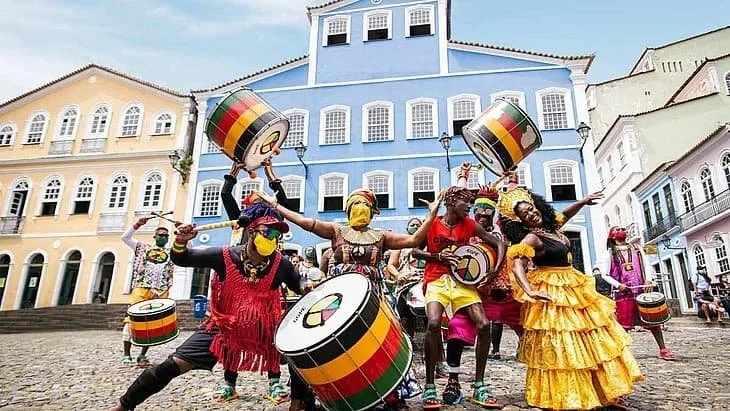THE BEAT THAT BRIDGES THE OCEAN
Published on the Jazz Is Dead Newsletter on 10/09/2025 - Subscribe here
The Unbroken Rhythm Connecting a Diaspora
In the spring of 1971, Tina Turner—then performing alongside her husband, Ike, in a partnership that was both professionally brilliant and personally turbulent—embarked on a tour of West Africa with the Ike & Tina Turner Revue. She arrived as the incandescent star of a hard-won, uniquely American sound, packaged in sequins and driven by the relentless rhythms of funk and soul. They came to deliver a spectacle, but for Tina, the journey would become a profound personal homecoming—a separate and powerful discovery of the very roots of her own musical and spiritual strength.
The defining moment came not on a staged arena, but in a spontaneous jam session after a show in Lagos. As local Nigerian drummers laid down complex, ancient polyrhythms, Ike Turner answered with a gritty, bending blues riff from his guitar. The sounds didn't clash; they locked together as if they were always meant to be one. In that exchange, the deep, historical connection between the music of the African diaspora and its source was made audible.
This moment was a microcosm of a story centuries in the making. The journey of African rhythms across the Atlantic, forged in the crucible of the transatlantic slave trade, created a musical diaspora that would forever change the world. The foundational element was West Africa's polyrhythmic tradition—the practice of layering multiple, contrasting rhythms to create a rich, conversational tapestry.
Max Roach - Photo: Beuford Smith
In the United States, this rhythmic heritage evolved into the field holler, the blues of Robert Johnson, and the polyrhythmic innovation of jazz pioneers like Max Roach. It found its purest, most powerful expression in the funk of James Brown and the soul-shouting intensity of Tina Turner—a direct embodiment of this rhythmic force.
Meanwhile, in Brazil, the same roots gave birth to the powerful batucada of Samba. This tradition was carried forward by legendary figures like composer Cartola, the velvet voice of Elis Regina, and the innovative guitarist Baden Powell. The movement found its modern evolution in the pioneering work of pianist Dom Salvador, the explosive Black Rio scene, and the powerful social force of the bloco Olodum, whose massive drumming ensembles drew directly from the Afro-Brazilian traditions of Bahia, which themselves are rooted in the rhythms of Yoruba and Congo nations. They fused these ancient patterns with American funk and soul to create powerful anthems of Black Brazilian identity.
Olodum rehearsing in the streets of Salvador, Brasil
Across the Caribbean and Latin America, the African heartbeat crystallized into the clave—the unwavering five-note pattern that structures the Cuban son of Arsenio Rodríguez and the global phenomenon of Salsa. This same architectural principle is a close cousin to the rhythms that powered the Turner Revue.
Make it stand out
The 1971 tour of Ike and Tina Turner was not a beginning, but a rediscovery. It was a moment in a continuous, living conversation that has been ongoing for centuries. From the samba schools of Rio to the jazz clubs of New Orleans, from the salsa dances of San Juan to the funk concerts of Detroit, the same rhythmic heart beats strong.
It is a testament to the unkillable power of culture. Though people were forcibly displaced, their music could not be silenced. It adapted, evolved, and merged, creating some of the most vibrant and beloved artistic traditions on the planet. The story of this musical connection is a story of profound loss, but also of incredible resilience, creativity, and the enduring power of the beat to lead us back, always, to our shared roots.




